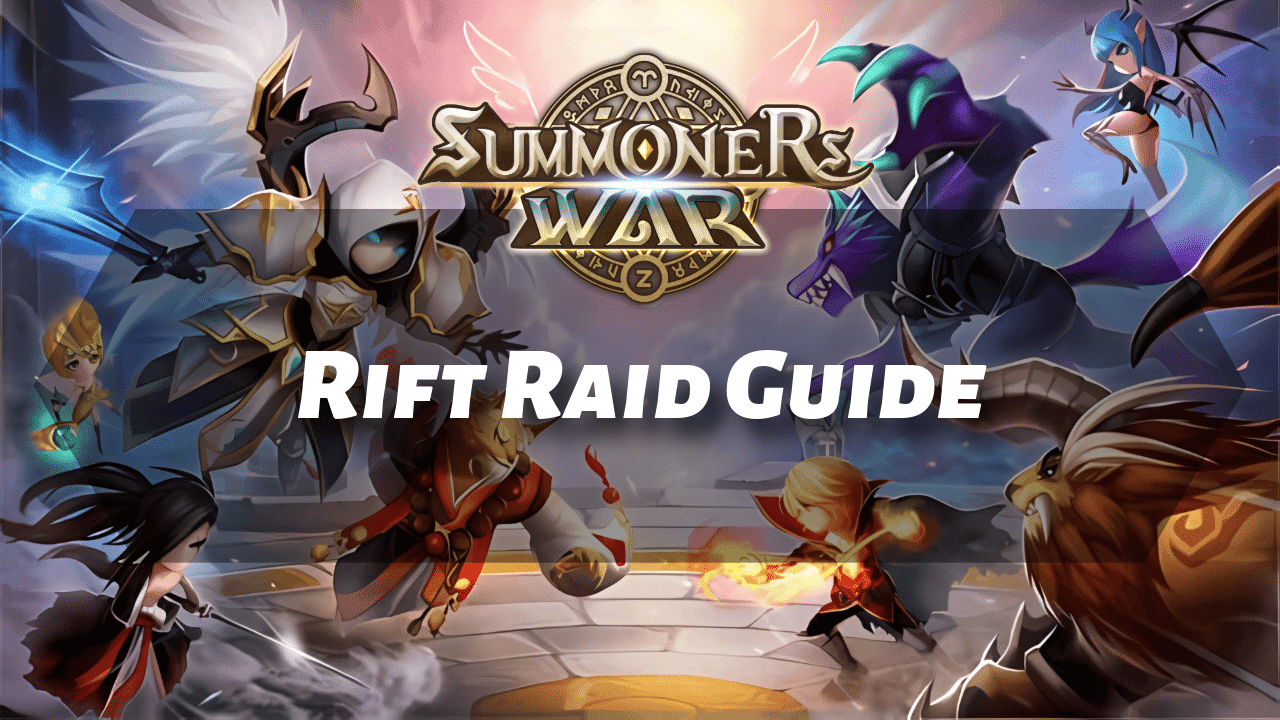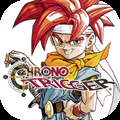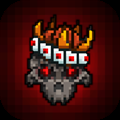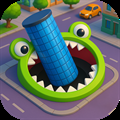
Introduction to Rift Raid (R5)
Summoners War Rift Raid Level 5 (R5) offers an exciting and strategic gameplay experience that sets it apart from other content in the game. In R5, players typically team up with two others to take on a powerful Raid Boss, though with the right strength and tactics, it is possible to challenge the boss solo. The primary incentive for farming Rift Raid Level 5 lies in its lucrative rewards, which include Grindstones and Enchanted Gems—key resources for optimizing rune builds.
These items allow players to enhance their runes by replacing substats, leading to significant power boosts for their monsters. As you continue to farm R5, you’ll notice major improvements in the strength of your runes and the overall performance of your team, which can elevate you to a more competitive level in the game. Additionally, Mana Stones are guaranteed as rewards, and the drop rate for high-grade Grindstones has been improved, offering even greater incentives to participate.
What makes Rift Raid Level 5 unique are its mechanics. Unlike other dungeons, where teams typically consist of five monsters, R5 teams are made up of six monsters. These monsters are placed in either the frontline or the backline, with the frontline monsters taking the brunt of the Boss’s attacks, while the backline is more protected. The battle itself is fought on auto-battle mode, which adds an extra layer of strategy and requires careful planning of monster placement and abilities.
To help you better navigate Rift Raids, here are some important terms to understand: ATB refers to the Attack Bar, or attack gauge, which tracks the progress of a monster’s turn; Debuff is any harmful effect that affects a monster; Cleanse is the act of removing harmful effects; Proc refers to the activation of a skill or rune effect; and Nat 5 denotes a Natural 5-Star monster, which is typically more powerful and valuable. Mastering these elements is key to building successful teams and crafting effective strategies in Rift Raid Level 5.
Prerequisites for Rift Raid (R5)
Before attempting Rift Raid Level 5 (R5) in Summoners War, it’s important to ensure that you’ve reached specific milestones in the game, as these will provide the foundation necessary for success in such a challenging environment. To start, you should have established consistent teams capable of farming the Level 10 dungeons for Giants Keep (GB10), Dragon’s Lair (DB10), and Necropolis (NB10). These dungeons are essential for obtaining high-quality runes, which are critical for success in R5. Additionally, having cleared Trial of Ascension Normal for at least three consecutive months demonstrates your ability to consistently build effective teams and apply solid strategies to PvE content.
You should also have progressed to at least Stage 70 of Trial of Ascension Hard, as this level of achievement reflects advanced knowledge of monster mechanics and rune optimization. Another prerequisite is the ability to run at least one fast farming team, with GB10 typically being the first dungeon where teams can consistently clear under 1:30. This speed suggests you have efficient rune setups and well-developed monsters, which are essential for R5 success. Furthermore, having the ability to farm Rift Raid Level 4 (R4) reliably is important, as it allows you to gather Grindstones and other resources that will be necessary for improving your monsters.
Equally crucial is ensuring that the monsters you plan to use for R5 have fully upgraded runes. Runes should ideally be maxed out to +15, as this directly impacts the effectiveness of your team in the raid. Meeting these milestones indicates that you have the necessary monster pool, rune quality, and game knowledge to begin preparing for and participating in Rift Raid Level 5.
Understanding the Rift Raid Boss
Understanding the Rift Raid Level 5 (R5) Boss is essential for building an effective team and ensuring success. The boss in R5 has several key skills and passives that significantly impact the outcome of the battle. One of the most important attacks is Breath of Doom, which targets all enemies and inflicts an Attack Power decrease and Attack Speed decrease for 2 turns. Additionally, it applies the Oblivious debuff for 2 turns, which blocks passive skills, and the activation rate of these harmful effects increases with the raid level. Crush of Doom is a powerful attack that specifically targets frontline monsters, ignoring all beneficial effects, and its damage increases significantly as the target’s Defense decreases.
If there are no monsters left in the frontline, this attack will target the backline. Another notable ability is Rageful Roar, which activates whenever an enemy takes a turn. After the boss has been enraged 16 times, this attack hits all enemies, removes all beneficial effects, and recovers the boss’s HP based on the number of effects removed. It also stuns all enemies and permanently increases the boss’s attack power. Total Annihilation is triggered when the boss loses 25% of its HP, causing the boss to remove all harmful effects and increase its stats, while also granting an additional hit for both Crush of Doom and Breath of Doom.
When preparing for R5, understanding the role of debuffs is crucial. Applying and maintaining harmful effects on the boss is key to surviving and dealing damage. Attack Break is essential to reduce the boss’s damage, while Heal Block prevents the boss from healing after using Rageful Roar. Defense Break increases the damage your team deals to the boss, and Attack Speed Slow reduces the frequency of the boss’s attacks.
Glancing Hit reduces the damage the boss deals and decreases the chance of harmful effects being applied. Brand increases the damage dealt to the boss. Since the boss applies numerous debuffs, having reliable cleansers to remove harmful effects from your team is critical. Passive cleansers like Veromos are ineffective due to the Oblivion debuff, so active cleansers are necessary.
Leader skills also play an important role in R5. Skills that provide Defense %, Resistance %, or Critical Rate % are valuable. Resistance helps your monsters resist the boss’s debuffs, while Defense and HP increase their survivability against the boss’s attacks. In terms of team composition, a typical R5 team consists of six monsters, with some positioned in the frontline to absorb the majority of the damage, and others in the backline to deal damage and support the team with less risk of being targeted by Crush of Doom. The quality of your runes is a significant factor in your team’s ability to survive and succeed in R5, with frontline monsters generally needing higher HP and Defense compared to backline monsters.
Since Rift Raids are forced to be on auto-battle, it’s important to consider your team’s AI behavior and skill cooldowns when building your team. Additionally, Mana Stones are guaranteed to drop as a reward, and the drop rate of high-grade Grindstones has been increased. Finally, managing the boss’s Rageful Roar mechanic is essential, as it strips buffs and stuns your team, making cleansers a vital part of your strategy.
By understanding these mechanics, debuff strategies, the importance of cleansers, and leader skills, you can start to build a team capable of consistently farming Rift Raid Level 5, earning valuable rewards like Grindstones and Enchanted Gems.
Essential Skills and Debuffs for R5 Teams
When preparing for Rift Raid Level 5 (R5), it is essential to equip your team with the right skills and debuffs to handle the boss effectively. Key skills to consider include leader skills that provide team-wide stat boosts. Defense, Resistance, and Critical Rate leader skills are particularly important for enhancing your team’s survivability and damage output. Defense leader skills help your monsters withstand the boss’s attacks, Resistance reduces the chance of being afflicted by harmful effects, and Critical Rate increases the consistency of your damage dealers.
Cleansing is also crucial, as the R5 boss applies numerous harmful debuffs, including Attack Power and Attack Speed decreases, as well as Oblivion. Reliable Area of Effect (AoE) cleansers are vital for keeping your team free of these debuffs and maintaining control over the battle. Heal Block is another essential skill because it prevents the boss from healing via its Rageful Roar ability, which recovers HP based on the number of beneficial effects removed from your team.
In terms of debuffs, Attack Break is considered the most important debuff for R5, as it reduces the boss’s Attack Power and significantly decreases the damage your team takes, improving overall survivability. Defense Break is also crucial to ensure your team can deal enough damage to defeat the boss before it becomes too powerful. Glancing Hit is a valuable debuff that reduces the damage dealt by the boss and lowers the chance of harmful effects being applied. While it is not as commonly used as Attack or Defense Break, it adds extra protection for your team.
Other debuffs that are highly recommended include Attack Speed Slow, which reduces the frequency of the boss’s attacks and gives your team more turns to heal and deal damage. Brand increases the damage your team deals to the boss, helping to speed up the fight. ATB Reduction is another useful debuff, as it delays the boss’s turns, allowing your team more time to act.
A well-balanced team for R5 should include monsters that can fulfill multiple roles, providing both essential skills and debuffs. The team composition should aim to cover all the key debuffs like Attack Break, Defense Break, and Heal Block while also incorporating some additional debuffs like Glancing Hit, Attack Speed Slow, and Brand for added safety and faster clear times. With the right team and strategic use of these skills and debuffs, you will be well-prepared to tackle Rift Raid Level 5 and secure valuable rewards.
Team Building Strategies and Monster Roles
Building a successful Rift Raid Level 5 (R5) team requires careful consideration of monster roles and effective team composition. The team consists of six monsters, with some placed in the frontline and others in the backline. Frontline monsters are responsible for absorbing the majority of the boss’s attacks, particularly the “Crush of Doom,” which targets them and ignores beneficial effects. Backline monsters are less exposed to direct damage but are crucial for dealing damage and providing support.
Common team layouts include a 4 Front / 2 Back setup, which uses four tanky or support monsters in the frontline and two damage dealers in the back, or a 2-man frontline with very tanky monsters and a 4-man backline focused on damage and support. Another option is a 3-man or 4-man frontline, which helps ease rune requirements for frontline monsters, allowing non-tanky monsters like Colleen or Lisa to be placed there.
Achieving success in R5 depends on having proper debuff coverage. It’s essential to maintain vital debuffs on the boss to reduce its damage output and boost your team’s own damage. Leader skills are also important, with Defense %, Critical Rate %, and Resistance % providing critical boosts to survivability and damage output. Rune quality plays a major role in ensuring survivability, with frontline monsters requiring high HP and Defense, while backline monsters should focus on damage and support but still have decent tankiness. Cleansers and healers should typically have 200+ Speed and 70% Resistance. Maxing your runes to +15 is strongly advised before attempting R5.
Essential monster roles for an R5 team include attack debuffers, healers, cleansers, and damage dealers. Attack Break is the most important debuff for reducing the boss’s damage, with Colleen being a top choice for this role. Healers like Colleen, Bella, Ariel, and Chasun are crucial for keeping the team alive. Cleanser monsters, such as Lisa, Konamiya, Mihyang, and Amarna, are necessary to remove harmful effects from your team. Heal Block is also important, as it prevents the boss from healing through its Rageful Roar skill, and Colleen excels at providing this debuff.
Defense Breakers, like Galleon, Darion, and Xiong Fei, increase the damage your team deals to the boss, allowing for faster clears. Damage dealers, such as Hwa, Kro, Theo, and Tesarion, contribute to overall damage output and often provide additional debuffs or leader skills. Damage Reducers like Darion and Dias help reduce incoming damage, while monsters with Attack Speed Slow or ATB Reduction, such as Hwa and Loren, can control the boss’s turn frequency. Glancing Hit is another debuff that can reduce the boss’s damage, with monsters like Xiong Fei and Mihyang offering this utility.
Building a stable R5 team requires balancing these roles and selecting the right monsters based on their abilities, debuffs, and synergy with your rune setup. Testing and adjusting your team composition and rune builds will help ensure consistent success in Rift Raid Level 5.
Recommended Monsters for Rift Raid (R5)
Building a strong team for Rift Raid Level 5 (R5) requires selecting monsters that fulfill specific roles, including frontline tanks, healers, cleansers, and damage dealers. These monsters should be chosen for their contributions to debuffs, healing, and overall damage output while ensuring synergy within the team.
Dias (Dark Death Knight)
Darion (Light Vagabond)
Xiong Fei (Fire Panda Warrior)
Frontline tanks play a crucial role in absorbing damage and debuffing the boss. Dias (Dark Death Knight) is a top-tier choice, offering a Resistance leader skill, a damage reduction passive, and multiple debuffs, including Attack Break, Defense Break, and Heal Block. Darion (Light Vagabond) is another solid option, providing damage reduction and Defense Break while being easy to rune. Xiong Fei (Fire Panda Warrior) is a strong tank due to his high HP, high Defense, and Attack Power Break debuff, along with a useful Defense Lead.
Main and backup healers and cleansers are essential for maintaining your team’s survival and managing harmful debuffs. Colleen (Fire Harpu) is highly regarded for her healing, Attack Break, and Heal Block, making her one of the best healers for R5. Lisa (Fire Neostone Agent) excels as a cleanser and can be placed in a 4-man frontline in speed R5 teams. Konamiya (Water Garuda) is a reliable, farmable cleanser. Amarna (Light Anubis) provides both a cleanse and a powerful heal, along with additional debuffs like Defense Break and Unrecoverable. Mihyang (Water Sky Dancer) offers Glancing Hit and a heal, while Delphoi (Wind Sylphid) is another cleanser with the potential for frontline placement.
Damage dealers are necessary to defeat the boss efficiently, and many also provide valuable debuffs or leader skills. Hwa (Fire Rakshasa) brings a Crit Rate Leader skill, Attack Speed Slow, and ATB Reduction, while dealing solid damage. Xiao Lin (Water Kung Fu Girl) is an exceptional damage dealer with high damage output. Sabrina (Water Boomerang Warrior) brings a combination of Attack Break, Heal Block, and Defense Break, alongside high damage. Talia (Water Chakram Dancer) deals increased damage when the boss’s HP is below 50% and self-cleanses, while Melissa (Wind Chakram Dancer) is considered one of the best damage dealers due to her damage scaling with the number of debuffs on the boss.
Kro (Dark Inugami)
Theomars (Water Ifrit)
Stella (Water Assassin)
Kro (Dark Inugami) provides Defense Break and Brand, while Stella (Water Assassin) brings additional Defense Break and Branding debuffs. Theomars (Water Ifrit) is a highly underrated damage dealer with high base stats and a speed-scaling skill. Tesarion (Fire Ifrit) provides a valuable Resistance leader skill and Defense Break, while Argen (Silver Blade) offers solid damage output. Water Homunculus (Ice Mist Path) and Wind Homunculus (Whirling Wind Path), obtainable through crafting, can also contribute to the team, with the Wind Homunculus offering Heal Block.
Team composition often requires monsters to fulfill multiple roles, so flexibility is key. The effectiveness of each monster depends on rune quality and synergy with other team members. Experimenting with different combinations of these monsters and adjusting runes can help build a consistent and successful R5 team.
Rune Requirements and Builds
To succeed in Rift Raid Level 5 (R5), it’s essential to build a well-balanced team, equip your monsters with appropriate runes, and optimize their stats for maximum efficiency. Achieving victory in R5 heavily depends on the quality of your runes. It’s recommended to max your runes to +15 before attempting R5 to ensure your monsters have enough power to survive and deal sufficient damage. Runes should be ground to improve their stats; even blue grinds can make a significant difference. Additionally, use artifacts, particularly flat defense artifacts, to enhance the defense of monsters with low base defense. It’s crucial not to waste high-quality grinds and gems on low-tier runes; they should be reserved for premium runes.
For frontline monsters, the general rule of thumb is to aim for at least 25,000 HP and 1,500 Defense for a 2-man frontline. For a 4-man frontline, aim for around 22,000-24,000 HP and 1,100-1,300 Defense. For backline monsters, a minimum of 20,000 HP and around 800-1,000 Defense is typically sufficient. Healers and cleansers should have at least 200 Speed and 70% Resistance, along with around 15% Accuracy. Damage dealers generally require 150-200 Speed and around 15% Accuracy, while also maintaining enough tankiness to survive the raid. Ideally, support monsters should have 90+ Speed, and your slowest monster should have at least 70 Speed.
Specific rune builds can vary based on the monster’s role. For example, Darion (Light Vagabond) is often built with Energy, Focus, or Guard runes, focusing on HP% or Defense% for survivability. Xiong Fei (Fire Panda Warrior) is commonly runed with Violent and Focus, prioritizing HP and Defense for his tank role. Colleen (Fire Harpu) benefits from Violent or Revenge runes, focusing on Speed, HP%, or Defense% to maximize her healing and debuffing potential. Hwa (Fire Rakshasa) is typically built with Rage/Blade or Fatal/Blade runes, focusing on Speed, Critical Damage, and Attack% to enhance her damage output. For damage dealers like Xiao Lin (Water Kung Fu Girl), Vampire or Rage/Blade runes are ideal, ensuring survivability while maximizing damage.
Support monsters like Lisa (Fire Neostone Agent) and Konamiya (Water Garuda) require high Speed to effectively cleanse and apply debuffs. Amarna (Light Anubis) needs to be tanky enough for survivability while maintaining sufficient speed for his healing and cleansing abilities. Mihyang (Water Sky Dancer) should also prioritize Speed to ensure her heal is timely.
It’s important to consider synergy when building your rune setups. For example, a Critical Rate leader skill might allow damage dealers to focus more on Crit Damage in their substats. Fight runes (ally attack increase) are especially valuable for R5, given the six-monster team composition. Ally HP, Resistance, and Defense fight runes are also helpful. While Will runes aren’t essential for R5, they can be useful if your monster is also used in PvP.
Finally, experimentation and adjustments are key to success. Testing different rune builds and team compositions will help you determine what works best for your specific monster box. Ensuring that your team can consistently apply necessary debuffs, survive the boss’s attacks, and deal sufficient damage to defeat the boss is the ultimate goal.
Tips for Successful R5 Farming
For successful Rift Raid Level 5 (R5) farming, it’s essential to build a well-balanced team that incorporates a variety of vital debuffs and fulfills different roles. The team should consist of frontline tanks, backline monsters, healers, cleansers, and damage dealers. A strong team will have multiple sources of Attack Break, the most crucial debuff, as well as Heal Block, Defense Break, Glancing Hit, and Attack Speed Slow. These debuffs are essential for controlling the boss, especially because the boss can heal by absorbing beneficial effects, making Heal Block particularly vital.
Each monster should fulfill specific roles with the following stat guidelines. Frontline tanks, who bear the brunt of the boss’s attacks, should aim for at least 25,000 HP and 1,500 Defense for a 2-man frontline, or around 22,000-24,000 HP and 1,100-1,300 Defense for a 4-man frontline. Speed for frontline tanks can generally be kept low. Recommended monsters for this role include Dias (Dark Death Knight), who provides a damage reduction passive and a Resistance leader skill, and Xiong Fei (Fire Panda Warrior), who offers a Defense lead and multiple debuffs. Darion (Light Vagabond) is also a solid option with his damage reduction passive and Defense Break.
Healers and cleansers are vital for removing harmful debuffs and ensuring your team survives. They should have at least 200 Speed, 70% Resistance, and 15% Accuracy. Colleen (Fire Harpu) is highly effective as a healer due to her Attack Break and Heal Block abilities. Other good choices include Lisa (Fire Neostone Agent) for her cleansing capabilities, Konamiya (Water Garuda) as a farmable cleanser, and Amarna (Light Anubis), who provides both healing and cleansing.
Damage dealers should be built for both speed and durability. They generally need 150-200 Speed and 15% Accuracy, while also maximizing Resistance without compromising damage output. Some damage dealers, like Hwa (Fire Rakshasa), offer additional utility through Attack Speed Slow and ATB reduction, while others, like Xiao Lin (Water Kung Fu Girl), bring high damage potential. Monsters that increase their damage based on the number of debuffs are especially strong.
When it comes to rune requirements, it’s crucial to prioritize the quality of your runes. Maxing your runes to +15 is highly recommended, as well as grinding your runes to improve their stats, even using blue grinds for added value. Flat defense artifacts can be particularly useful for monsters with low base defense, improving their overall survivability. Consider using Fight runes, which boost ally attack, as they provide significant benefits for the six-monster team composition required in R5.
Leader skills that provide Defense %, Resistance %, or Crit Rate % can also ease your rune requirements, allowing your monsters to focus on other essential stats. Additionally, monsters with multi-hit skills are valuable since they increase the chances of landing debuffs. For instance, Colleen’s first skill hits twice, boosting the chances of applying Attack Break.
Starting with lower raid levels, such as R3 or R4, can help you obtain necessary grinds before moving to R5. Also, ensure your tower upgrades are in place, as unlocking higher raid levels requires 30% contribution in lower levels.
Above all, prioritizing survivability is key. Make sure your frontline monsters can withstand the boss’s attacks, especially the Crush of Doom, which targets the frontline and ignores beneficial effects. Cleansing harmful effects like Attack Power and Attack Speed reduction, and Oblivion is crucial, so having an AOE cleanser with a low cooldown (4 turns or less) is important.
Lastly, always consider team synergy when selecting monsters. The effectiveness of each monster will be enhanced if their skills and leader skills complement each other. By focusing on these tips and regularly adjusting your team and rune builds, you can optimize your R5 farming strategy and achieve consistent success.













